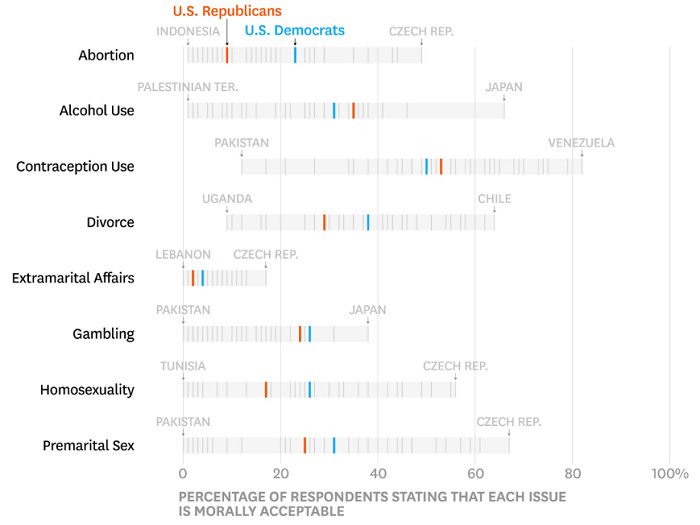Against "There Are Two X-Wing Parties"
One of my least favorite political tropes is the claim that “America has two left-wing parties” or “America has two right-wing parties” or “both major parties are socialist” or however else you want frame this. The argument goes that even the Democrats aren’t truly left (or even the Republicans aren’t truly right), and so one side of the political spectrum completely controls discourse.
Taken as an absolute claim, it’s meaningless. Both US parties are on the same side of center? What center? By the standards of the Soviet Union, both US political parties are extremely far right; by the standards of Pharaonic Egypt, they’re incomprehensibly far left. Whose standards for center are you using? The objective standard? Are you sure that exists? Are you sure you’re not just taking your own personal beliefs about what seems reasonable, declaring the middle of that the objectively correct center, and then getting angry when the real Overton Window isn’t centered around that point? People act as if you should just be able to take the leftmost thing imaginable, the rightmost thing imaginable, draw a line between them, find the middle, and then get angry if both US parties are on the same side of that line. But maybe they have poor imaginations. The leftmost thing I can imagine is an insectoid hive-mind; the rightmost thing I can imagine is a rapidly expanding cloud of profit-maximizing nanobots. Are we sure that a line drawn exactly midway between those two things lands on Joe Biden? What if it lands on anarcho-capitalism? Does that mean every existing human is left-wing?
Taken as a relative claim, it at least could make sense. But relative to what?
Relative to the US? False; both parties usually get about half of the vote, suggesting one is to the right of the median American, and the other to their left. You can probably argue that the Republican Party’s structural advantages cause both parties to be a little to the right of where they’d be without them, or that Americans’ ignorance of party platforms means you can smuggle a few points in that are slightly more extreme than what they’d endorse, but it’s going to be a small effect.
Relative to other countries? The relevant paper is Putting Within-Country Political Differences In Global Perspective. It asks people in many countries what they think of certain things, and also asks people in both major US parties what they think. There’s no consistent tendency for both parties to be on one side of the global consensus, at least on the sorts of cultural issues they talk about (no, I don’t know an economic version of this):
 See this comment for discussion of ways this graph is weird or misleading.
See this comment for discussion of ways this graph is weird or misleading.
This doesn’t mean you can’t find a reference class where these claims make sense. I think most people who claim “America has two left-wing parties” are talking about relative to US history, and people who claim “America has two right-wing parties” are talking about relative to other OECD countries.
But I would rather people say what they mean: “America is to the right of other OECD countries on most issues” or “America has moved left since the New Deal” - rather than make the meaningless-on-its-own assertion that “America has two X-wing parties”.